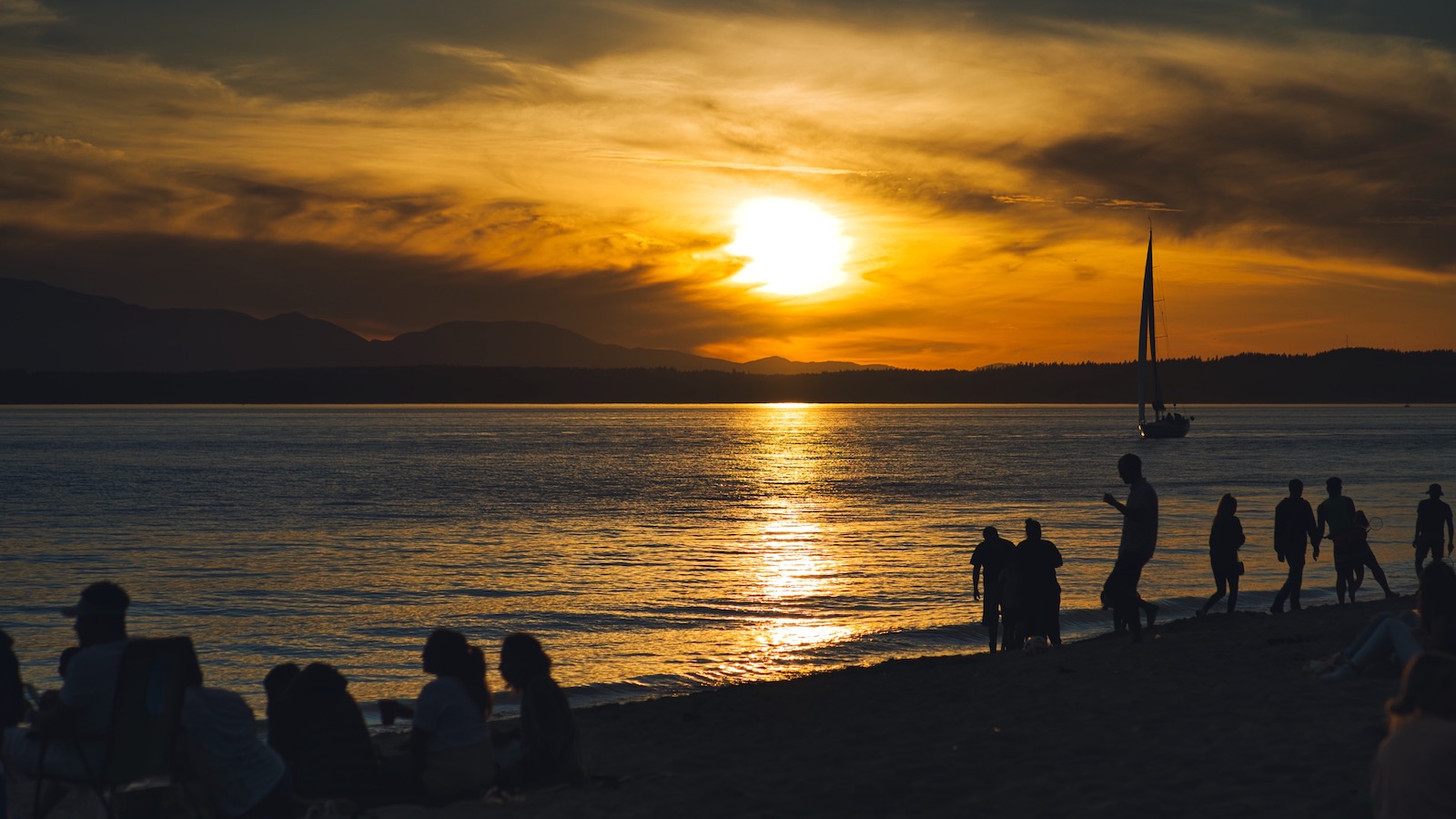This story is part of Record High, a Grist series examining extreme heat and its impact on how — and where — we live.
The unseasonably hot weather that placed more than 12 million people throughout the Pacific Northwest under a heat advisory could stick around for a few more days. That’s uncomfortable news for residents battling record-setting temperatures topping 90 degrees in a region uniquely vulnerable to heat waves.
Monday marked the fourth blistering day of a hot spell that saw temperatures more than 20 degrees higher than typical throughout Oregon and Washington.
In Seattle, the mercury climbed to a searing 86 degrees on Saturday — a record for May 13 — before setting another record of 89 degrees the next day. Portland, Oregon, reached 93 degrees over the weekend, breaking a 50-year benchmark, and scorching temperatures tormented both cities again Monday. Both cities tend to see highs in the mid-60s this time of year. Seattle in particular is mild; May temperatures have broken 90 degrees just six times since 1948.
Canada is feeling the heat, too. At least 17 temperature records fell across British Columbia during the weekend, including in the capital of Victoria, which saw a high of 83 degrees. Lytton, about three hours northeast of Vancouver, clocked 93 degrees on Saturday — the province’s highest temperature.
Experts say the unseasonal temperatures could also affect Alberta, where dozens of wildfires have burned 1 million acres and caused tens of thousands of people to evacuate.
Evidence suggests climate change is making these heat waves more likely. “Many places in the Pacific Northwest from Washington up into British Columbia are going to experience conditions [over the next few days] that are at least five times more likely due to climate change,” Andrew Pershing, a climate scientist with the nonprofit Climate Central, told KUOW radio in Seattle.
Across the U.S., heat waves have become nearly three times as frequent since the 1960s, and the heat wave season has expanded by some 46 days.
The normally temperate Pacific Northwest is particularly susceptible to intense heat. Seattle is the least air conditioned major city in the U.S., with cooling systems installed in just over half of its housing units — compared to nearly 90 percent in New York City. Portland is better equipped but still lags behind other metropolitan areas.
Health officials throughout the region warned residents to stay cool and hydrated — especially vulnerable populations like children, outdoor workers, and people with chronic health conditions. This is particularly important during an early season scorcher, as people haven’t yet had a chance to acclimate to hotter temperatures. Because bodies of water haven’t yet had a chance to warm up either, health officials also warned about the risk of drowning from “cold shock,” a phenomenon that suddenly slows people’s heart rate and blood pressure after jumping into cold water.
Other risks from high heat include headache, muscle cramps, dehydration, and vomiting. Previous heat waves in the Pacific Northwest have claimed dozens or even hundreds of lives, including the massive heat dome of June 2021 that killed more than 800 people across Washington, Oregon, and British Columbia. A smaller heat wave in Washington state last year killed at least 10 people and sent more than 500 to emergency rooms.




